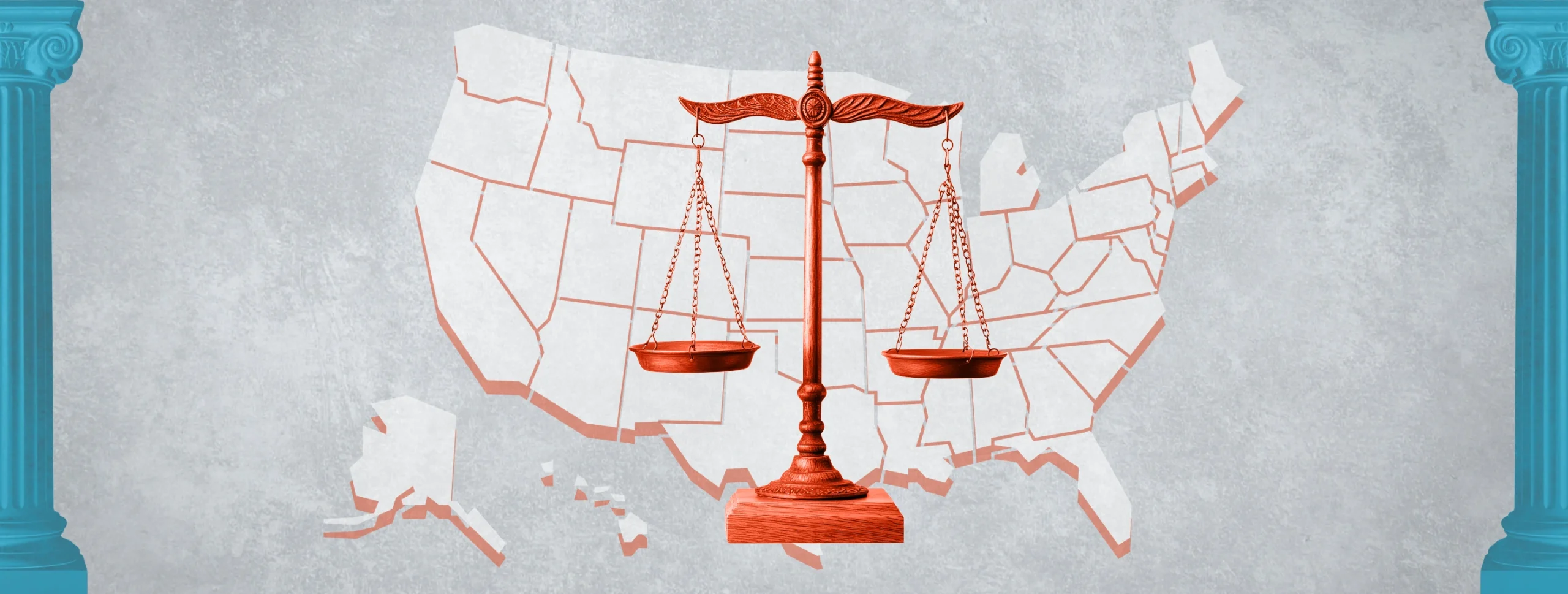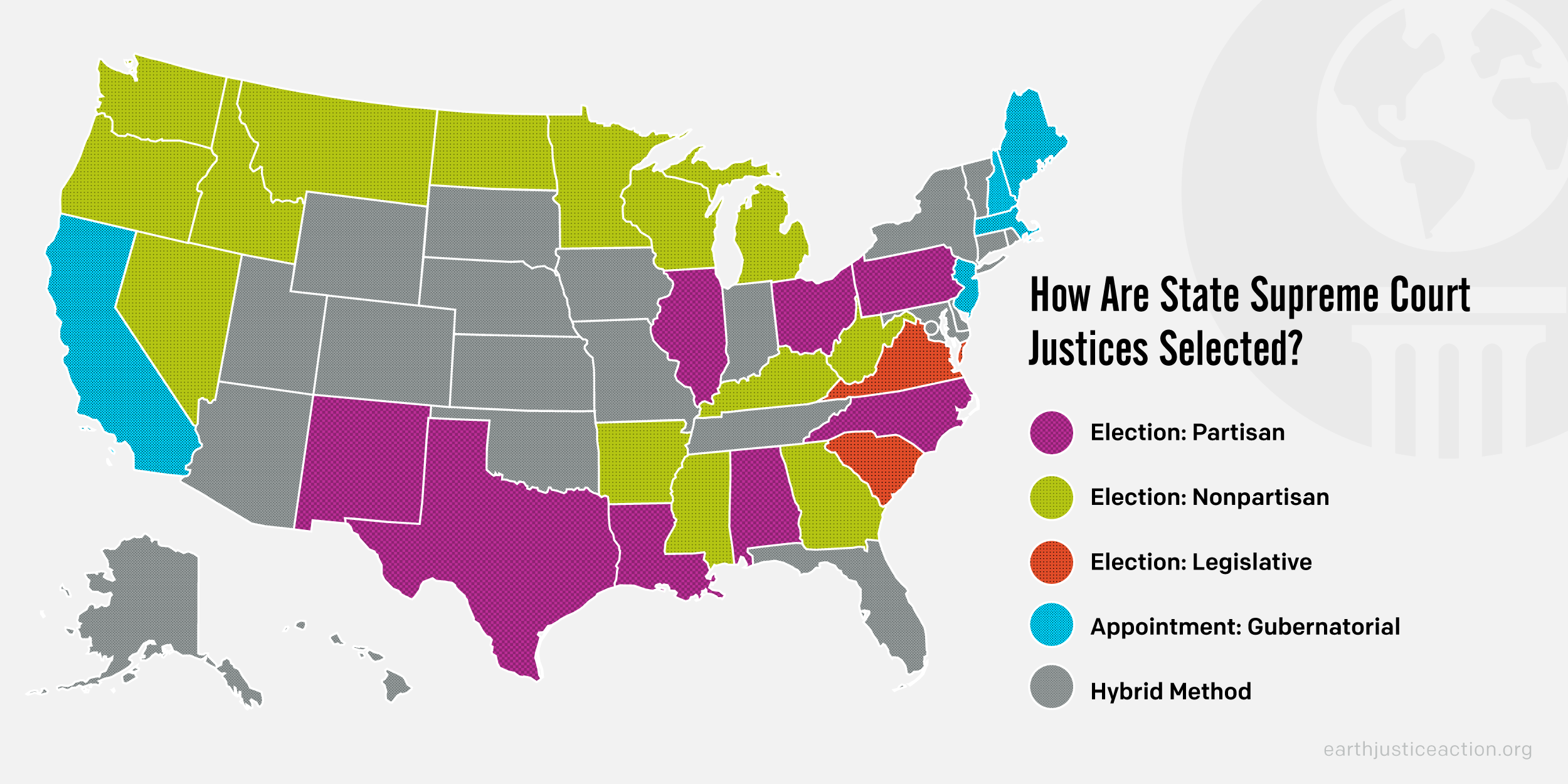
The Importance of State Supreme Courts
As the federal government and U.S. Supreme Court continue to dismantle crucial environmental protections, much of the fight for a cleaner, healthier planet shifts to the state courts — especially state supreme courts.
The final arbiters of their states' constitutions, state supreme courts have a huge impact on the daily lives of the people they serve. That's why it's crucial to know both how the justices in your state are selected and the kinds of cases they've decided.
The Selection Process
There are five main ways state supreme court justices are selected: partisan election, nonpartisan election, gubernatorial appointment, state legislature election, and a hybrid method.
However, differences exist even within these primary methods, including the timing of elections, whether nominees need to be confirmed, and more.

Key State Supreme Court Decisions
 1. Held v. Montana (2024): Youth plaintiffs successfully sued to get the state to investigate the potential climate effects of proposed fossil fuel projects. The court ruled that under the state’s “green amendment,” which guarantees a right to a clean and healthy environment, refusing to consider climate effects was in direct violation of Montanans’ civil liberties.
1. Held v. Montana (2024): Youth plaintiffs successfully sued to get the state to investigate the potential climate effects of proposed fossil fuel projects. The court ruled that under the state’s “green amendment,” which guarantees a right to a clean and healthy environment, refusing to consider climate effects was in direct violation of Montanans’ civil liberties.
2. PEDF v. Commonwealth (2017, 2021): Two decisions in Pennsylvania greatly expanded the reach of the state's green amendment, as the justices ruled that funds generated by leasing public lands to oil and gas companies must be used for conservation efforts.
3. Michigan Farm Bureau v. Department of Environment, Great Lakes, and Energy (2024): The Michigan Supreme Court affirmed the Department of Environment, Great Lakes, and Energy’s ability to issue stronger, better permits curbing bacteria-filled waste runoff that was polluting Michiganders’ drinking water. Despite not having a green amendment to draw on, the Michigan court was fully within its right to issue a broad, pro-environmental interpretation of agency power.

